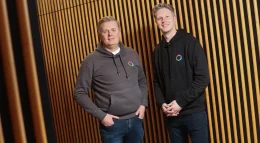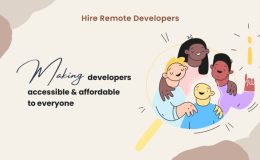This is yet another Excellent post by Kate Alhola showing the issues faced when ‘Porting Meego 1.2 Harmattan Qt Quick Components’. Below is a small abstract from the original post but please follow the link at the bottom for the full post with the full details.

In my previous blog I had introduction to MeeGo 1.2 Harmattan Qt Quick components, in this blog I wrote about porting components to other platforms than MeeGo 1.2 Harmattan and in next one about porting applications to different Qt Quick Components like MeeGo-Ux, Symbian or desktop.
Nokia N9 device will be largest volume MeeGo device in near future and most interesting platform for MeeGo application developers. Portability of Harmattan components is interesting issue for many reasons. N950 developer devices are produced only limited quantity and N900 provides excellent developer platform that is more easily available. Many MeeGo developers would like to see their application to run other MeeGo devices and would like distribute their application for all of them. Harmattan components are licensed as BSD license, so they are free to distribute any platform.
MeeGo 1.2 Qt Quick components are portable code but there is some issues need to taken care when porting them.First one is that components use Qt Quick 1.1 and most platforms like Ubuntu Natty or MeeGo 1.2 still have Qt Quick 1.0. I have made patch set allowing components to run in Qt Quick 1.0. This is problem is just temporary, and vanish soon when MeeGo and Ubuntu upgrade up to date Qt version in next release.
Second issue is theming. MeeGo 1.2 Harmattan SDK comes with Nokia MeeGo 1.2 Harmattan product theme that is same theme used in production device, N9. This theme is Nokia proprietary. It may be used in software development but it can’t be redistributed. When you make applications for N9, this is no problem because theme is factory installed in N9. If you would like distribute your applications to other MeeGo or even non MeeGo devices, you need to use theme that allows redistribution. Standard MeeGo 1.2 uses MeeGoTouch theming that is based on .svg files having multiple graphics elements in one file. Qt Quick uses .png BorderImages. To use components, I have exported graphics elements as .png files and made separate add on package. Now developers have two choices, if they would like just develop for N9, it is recommend to use Nokia “blanco” theme, if intention is to distribute application to other platforms, you should use open theme based on MeeGoTouch “base” theme or other compatible theme.
Third issue is different UX. The UX between MeeGo 1.2 handset, MeeGo 1.2 tablet and MeeGo 1.2 Harmattan. There is a big difference to end user, MeeGo 1.2 Harmattan has magnificent swipe UI where task switching is done by swipe gesture. MeeGo 1.2 handset uses traditional way to have close button in application toolbar and MeeGo 1.2 Tablet uses hardware home key. The great advantage of Harmattan Swipe gesture is that no valuable screen space is wasted for home button and toolbar and there is no device front surface wasted for home button and larger amount of device front surface can be used for display and actual application. My experience of MeeGo tablet is still based on keeping one tablet in my hand 5 minutes. For application code difference is small. In MeeGo 1.2 handset application should initiate itself task switching but minimizing it’s window. In MeeGo 1.2 Harmattan and MeeGo 1.2 tablet, task switching activity is initiated by external process as result of swipe gesture or pressing home button. If we compare to typical desktop applications, application switching, minimizing and closing window is initiated by external window manager application. Close and minimize buttons are in desktop in window frame that is owned by window manager, not by application. Maemo Hildon used same method, tittle bar was owned by system process. In MeeGo, all screen is owned by application and if there are home and close buttons, application should respond to them and initiate action. Other small difference is that in MeeGo 1.2 Handset and MeeGo tablet, toolbar is at top of the window when in Harmattan it is at bottom. At summary differences:
Source Nokia Developer Blogs

















